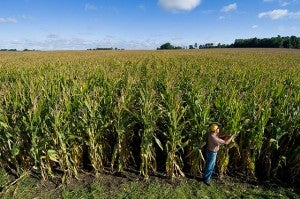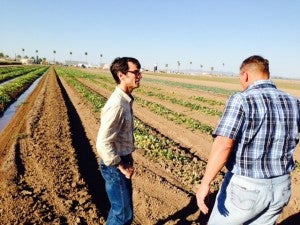
Callie Eideberg, EDF’s new senior policy manager for sustainable agriculture.
We often hear about the deep-rooted water quality challenges in the Chesapeake Bay, and how not enough progress is being made. While agriculture, urban/suburban runoff, vehicle emissions, and other sources share responsibility for the bay’s poor health, all too often farmers shoulder most of the blame.
Earlier this month, USDA released the Chesapeake Bay Progress Report, which revealed that since 2009, federal investments helped area farmers implement nearly $1 billion worth of conservation practices on more than 3.5 million acres and install nearly 3,500 miles of riparian buffers that reduce nutrient runoff into waterways. Between 2006 and 2011, farmer efforts reduced sediment loss by 15.1 million tons per year.
This is encouraging news, and part of the reason the overall health of the bay is improving. Supporting farmers and their livelihoods is key to solving the watershed’s environmental challenges. As the report notes, “a thriving and sustainable agricultural sector is critical to restoring the bay.”
There is still a lot of work to do. Because a significant increase in public funding is unlikely, relying too heavily on federal investment in voluntary conservation programs is not a good pathway to fully heal the bay.
Here are two ways that agriculture can further accelerate improvements in the watershed. Read More













